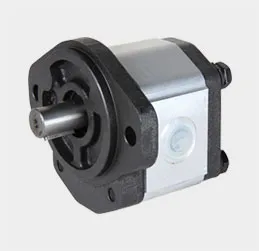Optimal Draft Angles for Die Casting Processes and Their Impact on Product Quality
Understanding Die Cast Draft Angle Importance and Application
Die casting is a manufacturing process that allows for the production of complex metal parts with high precision and efficiency. One critical aspect of this process is the concept of draft angle. Draft angle refers to the angle that is incorporated into the design of the die to facilitate the easy ejection of the cast part once it has cooled and solidified. Understanding and implementing the proper draft angle is vital for the success of any die casting project.
What is Draft Angle?
When a part is formed within a die, it is often subjected to friction as it adheres to the walls of the cavity. A draft angle, which is typically measured in degrees, is designed to reduce this friction, allowing the part to be ejected easily. Without an adequate draft angle, the part may experience damage during removal, leading to defects, higher production costs, and inefficiencies. A good draft angle minimizes the chance of the part sticking to the core, ensuring a smooth ejection process and preserving the quality of the finished part.
Recommended Draft Angles
The recommended draft angle for die casting typically ranges from 1° to 5°, depending on the material being cast and the complexity of the part. For parts with intricate designs, a larger draft angle may be necessary to accommodate undercuts and other geometric features. In contrast, simpler parts may require minimal draft. For aluminum casts, a draft angle of around 2° to 3° is often effective, while zinc components may benefit from a slightly smaller angle.
Consequences of Inadequate Draft Angles
Neglecting to incorporate an appropriate draft angle can lead to a range of issues. Insufficient draft may result in
1. Increased Wear on Tools Excessive force may be required to eject parts, leading to increased wear on the die and other tooling. 2. Surface Damage Parts may become scratched or damaged during ejection, impacting overall quality and potentially leading to increased rework or scrap costs.
die cast draft angle

Design Considerations for Draft Angle
In the design phase, it is crucial to consider the draft angle early in the development of the part and the die. Here are some key considerations
- Part Complexity Evaluate the design complexity and identify areas where undercuts may exist. These sections often require larger draft angles or alternative design solutions.
- Material Selection Different materials respond differently to casting techniques. Adjusting the draft angle based on material properties will optimize the production process.
- Die Design The design of the die itself should facilitate the ejection process. Engineers must ensure that the draft angle is not only included in the core design but also in any additional features like pins or slides.
- Testing and Prototyping Before finalizing the design, it is advisable to conduct tests or create prototypes to assess the effectiveness of the chosen draft angle. This will help identify any potential issues and allow for adjustments.
Conclusion
In conclusion, incorporating the proper draft angle in die casting is crucial for ensuring a smooth ejection process and maintaining the quality of cast parts. By understanding the implications of draft angle and making informed design choices, manufacturers can optimize their processes, reduce costs, and enhance product quality. Draft angle is not just a technical requirement; it is a key factor in successful die casting that can influence the overall efficiency of production and the satisfaction of end-users. With careful consideration and planning, the implementation of appropriate draft angles can significantly contribute to the success of any die casting operation.
-
Precision Sheet Metal Stamping Manufacturer | Fast & ReliableNewsAug.01,2025
-
OEM Sand Cast Pump Valve Fittings - Baoding Hairun Machinery And Equipment Trading Co., Ltd.NewsAug.01,2025
-
Custom OEM Impellers | High Efficiency & PrecisionNewsAug.01,2025
-
OEM Sand Cast Pump Valve Fittings - Baoding Hairun Machinery | Customization, Quality AssuranceNewsAug.01,2025
-
OEM Sand Cast Pump Valve Fittings - Baoding Hairun Machinery And Equipment Trading Co., Ltd.NewsAug.01,2025
-
OEM Sand Cast Pump Valve Fittings - Baoding Hairun Machinery And Equipment Trading Co., Ltd.NewsJul.31,2025















